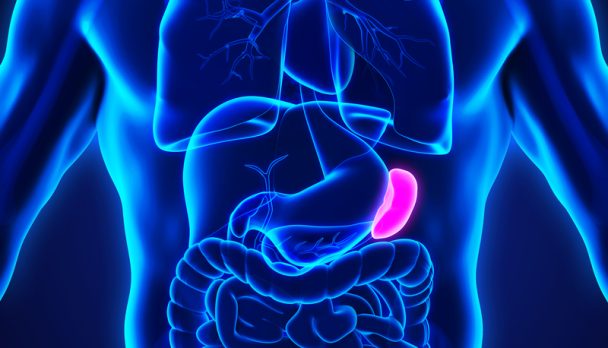It is estimated that up to 25,000 Australians are affected by asplenia or hyposplenism.1 Many are unaware of the fact, and its potential consequences.
The spleen plays an important role in immune function, in particular the prevention of infection due to some specific organisms (Table 1).
Infection Risk
Infection is a relatively common occurrence in those without a functioning spleen. Overwhelming post-splenectomy infection (OPSI), occurs in up to 5% of asplenic patients and has a mortality rate of over 50%. The risk is particularly high in children aged under five, and in the first three years post-splenectomy. However, the risk is lifelong.1
Organisms of Concern
Table 1: Organisms of Concern
| Agent | Comment |
| Streptococcus pneumoniae | Accounts for >50% of severe infections. Vaccine available and recommended |
| Neiserria meningitidis | Vaccine available and recommended. |
| Haemophilus influenza type B | Vaccine available and recommended. |
| Capnocytophagia species | Oral flora in animals. Risk of acquisition after animal bites. |
| Bordetella holmesii | Newly recognised pathogen. |
| Plasmodia species (Malaria) Babesia, Ehrlichia | Potential risk for travellers. Seek pre-travel advice. |
Causes of Asplenia and Hyposplenism
Asplenia maybe congenital but is more often acquired as a result of trauma or the surgical removal of the spleen due to haematological conditions, or after incidental splenic damage incurred during intra-abdominal surgery. Functional hyposplenism also confers an increased risk of infection and may occur as a result of a number of medical conditions (Table 2). Table 2: Medical conditions associated with hyposplenism| Coeliac disease |
| SLE |
| Sickle Cell disease |
| Rheumatoid arthritis |
| Malignant infiltration e.g. lymphoma |
| Splenic infarction or radiation |
| Graft versus host disease |
Detection of Asplenia and Hyposplenism
The presence of Howell-Jolly bodies in a blood film may be a clue to the presence of unrecognised asplenia or hyposplenism. Other investigations that may be of assistance in suspected cases are imaging studies such as ultrasound or CT.Prevention of Infection
Evidence suggests it is possible to significantly decrease the incidence of infection in asplenic and or hyposplenic patients. Spleen Australia has recently demonstrated a 69% reduction in serious infections in patients on their registry.2 The key strategies utilised by Spleen Australia include; 1. Education- Informing patients and their families of the risk of infection, signs and symptoms of sepsis and the need to develop a management plan should these occur:
- Importance of seeking urgent medical attention if symptomatic.
- Maintaining a standby supply of antibiotics for emergency use.
- Provision of advice regarding travel and other potential exposure risks e.g. animal contact.
- Encouraging the wearing of a Medical Alert bracelet.
- Consider antibiotic prophylaxis, particular in first three years post-splenectomy (With either penicillin or roxithromycin).
- Maintain a standby emergency supply of antibiotics in case of sepsis (usually Amoxil 3g).
- Pneumococcal, Meningococcal, Haemophilus influenza type B vaccines - initial course and ongoing boosters as required.
- Annual influenza vaccine - to minimise the chance of post-influenza bacterial infection.
Key Messages
- Infection is a significant, life-long risk in asplenic and hyposplenic patients.
- The risks can be mitigated by:
- The early recognition of the underlying condition,
- Comprehensive patient education,
- Appropriate use of use of prophylactic and empirical antibiotics, and
- Ensuring that patients receive recommended initial and ongoing vaccinations.
References
- Spleen Australia. Welcome to Spleen Australia: a clinical service and registry for people with a non-functioning spleen. Melbourne VIC: Diabetes Australia. Available from: www.spleen.org.au
- Arnott A, Jones P, Franklin LJ, Spelman D, Leder K, Cheng AC. A Registry for Patients With Asplenia/Hyposplenism Reduces the Risk of Infections With Encapsulated Organisms. Clin Infect Dis. 2018 Aug 1; 67(4): 557-61. Available from: https://doi.org/10.1093/cid/ciy141





